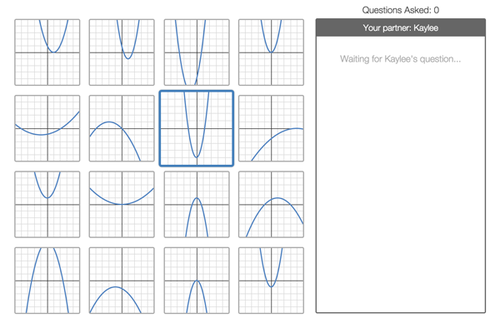Being a STEM teacher makes you think about things you've never considered...a lot. I've spent more time considering rations you'd need to live on Mars and the location of the focus of our parabolic planetarium at school than I'd like to admit and generally these mental aerobics have made me a stronger thinker and teacher. This has been a direct result of my time spent in STEM and life was not always so in my previous job. One thing that was usually about as far from my mathematical mind was the life of people like my friend Jon, who is a graphic designer. I've always loved looking at his latest projects for clients and he would always explain the client's reaction to it. He even designed the layout of the cornhole boards I made for my wedding, offering me 3 different options and allowing me to give him feedback on what I liked best before he sent me the final design. Seems like a different world than mine own (or at least it did at the time).
Cue dramatic music and study the picture here:
 |
| STEM Design Cycle |
This is the design cycle by which we live and die in my STEM program. It is a process that as adults we move through almost without thinking- figure out the problem, come up with a idea, see how it works, get some feedback and reflect, and then modify to make better. It wasn't until I met a very wise art-teacher-turned-STEM-guru that I started to see the world of design and my own world start to converge. This whole process is the key to everything I do as a teacher, as a mathematician, as a team member, and in my own personal relationships. This is how we grow and improve.
Recently I attended a PD that asked us to view our blended courses from a design perspective, something I wish I'd considered more before this whole thing started 2 years ago. When I think about the creation and implementation of the course, I realize that I'm immersed in this process almost constantly. The class is by no means perfect and I regularly try to tweak and get feedback on things. Feedback can be a scary thing when you're sticking your neck out and trying something new....the more I teach blended, the more confident I feel in asking for help in it and the more critical I find myself being of my own design. We discussed and considered research from the Schlechty Center and it's some powerful stuff. I am by no means an expert in this, but here are some highlights that jumped out at me when viewing through the blended learning lens:
Design vs. Planning
All too often we choose to embrace structure and order over chaos and divergent thinking. It's easier. It's comforting. And frankly, it's how we were taught. Because design is trying to meet the needs of it's "client" (the student, in our case) and not trying fit activities into an organized algorithm, it is messy. It involves experimentation, student choice, and being willing to admit something didn't work at all. As a teacher, it's often frustrating when students come to you without the background knowledge they need and rather than planning for the content I'm trying to teach I should be designing for the needs of my students where they stand in order to build them up to where I need them to be. Blended is the perfect opportunity to do this since it offers so many options for personalization. However, that type of personalization takes some seriously intentional work.
Design Qualities for Creating Engaging Work
To read these, check out this document from the Schlechty Center:
There's so much substance in these 10 principles. They address the big issues I wrestle with daily in blended learning: motivation, failure, cooperation, feedback, choice.
Some more interesting reading on the subject:
Focus Within Realm of Teacher Control
I am learning to remember that I have no power over many of the choices the students make, especially in a model that allows for students to complete their work in an unsupervised environment. It's a large amount of control with which I've had to part. What I came away from the PD thinking was that I need to look at the factors I can control and use design thinking to improve those. Less self-blame, more self-reflection.
One and a half semesters into teaching using this model and yesterday I still had a "real talk" with my students about why work doesn't get turned in consistently and what I can do to help them with that. In a short conversation, my students and I discovered that the LMS we are using doesn't notify them of a certain type of assignment and we made plans to change that for the future. Such a productive conversation, but it involves being vulnerable and admitting to others that something isn't working well- that's scary. The kids are definitely seeing that I'm human and willing to improve and learn from them. I'm incredibly grateful for everything I've learned so far and the honest and constructive feedback of almost 100 kids who've been willing to fail forward with me.

















